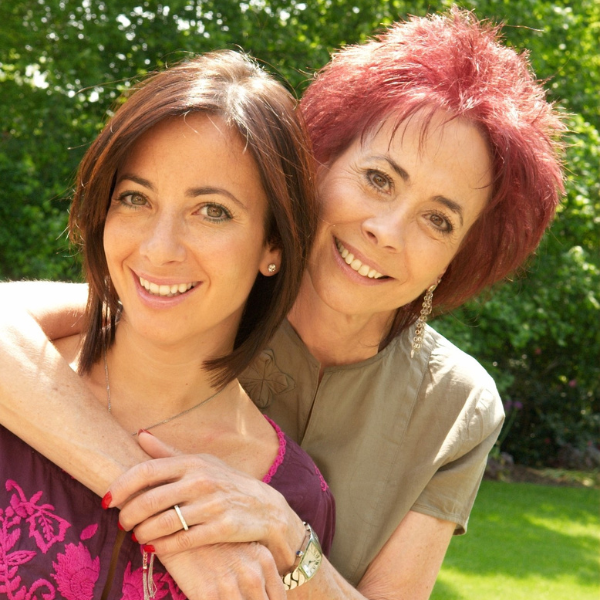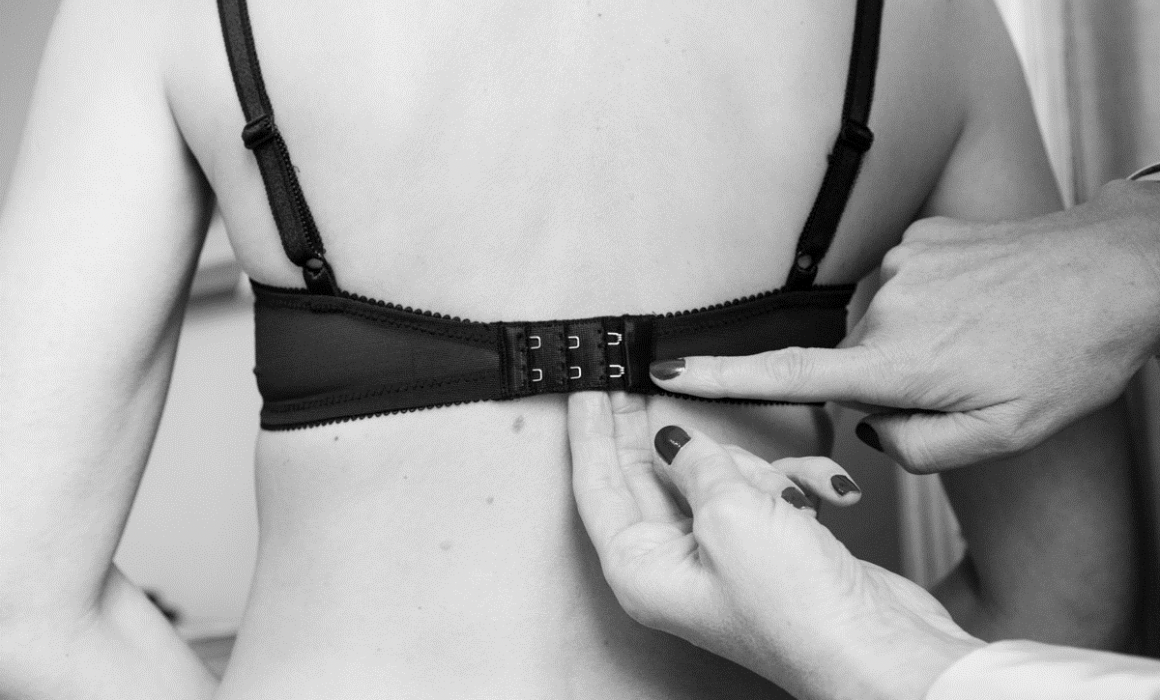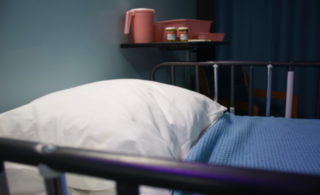
It can feel daunting and overwhelming when faced with choosing a post-surgery bra after breast cancer surgery and often it is difficult to know where to find something suitable and how to know what is suitable and what isn’t. In this article Monica Harrington, lingerie expert, gives her insight and advice.
By Monica Harrington
Hello, I’m Monica Harrington and I am so glad you found me. Over the last thirty years I have fitted thousands of women pre and post breast cancer surgery for bras and prostheses and I am now an ambassador for Future Dreams. Finding the right bras and prostheses can be complicated and daunting. Whether you have had a mastectomy, partial mastectomy or reconstruction I am here to give you some invaluable advice. I’ll help you along the way at different stages when you will have different needs from your bras.
Why we wear bras
You may be surprised to hear that there are no muscles in the breast and the breast moves as you move. Bras are designed to support the breast. Wearing the correct size and shape will give you the added benefit of comfort. This is one of the reasons why we choose to wear a bra.
Many of us are wearing the incorrect size, shape and style of bra and it is often difficult to choose. Different bra features and fabrics can mean that bras fit in different ways even those from the same brand. With so many styles, brands and sizes which can all fit in different ways, this can be very confusing for us.
Ideally it is best to have a bra fitting before surgery but that is not always possible. I understand from speaking to many women that there are lots of decisions to be made at this time and bra fitting can be very low down of your priority list.
I have come up with some easy steps to help you check if you are wearing the correct bra. To take away the worry of finding an appropriate bra after surgery.
There are also some tips on prostheses fitting and what to wear post reconstruction, so please read on.
What to look for when checking if your bra fits
Band The band of the bra offers about 80% of the support and should sit level around the body. If the band is digging into the body, it usually means it’s too tight. If the band is riding up your back this means it’s too loose. This can also happen when a bra has worn out due to washing and wearing over time.
Hook & Eye Closure On a new bra, fit it on the loosest hook and eye closure. Why? As the bra stretches over time from washing and wearing you can tighten it and get more wear.
Cups Breasts need to be fully in the cups. If there is spilling out of the sides, front or underneath the band, it usually means the cups are too small. If the cups of the bra are wrinkling or there is excess space in the cups, the bra cups are too big. The bra’s wires or side seams sit behind the breasts. If they are digging in or sitting on the breast, the cups are too small. If the wires or sides seams are sitting too high under the arms, the cups may be too big or it can be due to the band being too loose.
Centre Front This is the area between the cups and should sit close to the body. If this is standing away from the body it suggests that the band is too big or the cups are too small, pushing the centre front forwards.
Straps Strap position and tightness is very personal. Some like a tighter strap; others a looser strap. The straps offer some support but not all of the support. If your straps are taking the majority of the weight of the breasts it’s usually because the band of the bra is too big and not offering enough support. The straps are often adjusted to pull the breast upwards. This causes the band to ride up at the back and create discomfort on the shoulders.
Shape That all important bra shape. There are different bra shapes to choose from. Find a shape that works for you and looks great under your clothes.
Monica’s Tip: Do NOT bin all your bras. This is a tip I give to every woman I meet post-surgery. If your bras are bothering you every time you open the drawer, put them in a box or bag. Then put them away until you are ready to try them again. Then use my fitting tips to check if they still fit you, if they are suitable, or even if you still like them. If you don’t, then your bras can be retired on your terms not because you are being told “You can’t wear these bras any longer”
Bra tips for post-surgery
There are different post-surgery bra-fitting stages, depending on what type of surgery you decide to have:
Straight after surgery without reconstruction – what bra should you wear?
Here are my tips to find the best bra for you. At this stage it is important to choose a bra which is specifically designed to wear post-surgery. This is the bra you can take to the hospital with you when you are having your surgery.
What to look for:
- Non-wired for added comfort and less risk of rubbing against the surgery area.
- Front fastening for easy access – you may have restrictive movement.
- Seamless style to avoid any risk of rubbing on the surgery area.
- The bra needs to be comfortable and supportive.
- Deep under-band will give you added support.
- Deep sides to the bra to prevent any risk of rubbing on the scars.
- Fabric that feels soft and does not rub.
- The correct level of compression to give you the support you need.
The hospital will give you a soft temporary breast form known as a “Softie” or “Comfie”. This is made out of fabric (with a removable fibre filling) to insert inside your bra after your mastectomy.
Here are some tips for fitting the temporary breast form if you decide to wear one:
- They are available in different sizes so ask for a size similar to your breast size.
- The filling inside the “Softie” or “Comfie” can be very bulky. I suggest that you remove some of the filling and adjust to your natural shape. For example, if you are usually shallow at the top move the filling to be fuller at the bottom half.
- The “Softie” or “Comfie” is light weight and may move upwards inside your bra. To keep it in place you can sew it to the inside of the bra cup (before washing, just remember to remove the filling). You could also use a safety pin to fix it to the bra and remove easily before washing. In some post-surgery bras, there are pockets to insert the “Softie” or “Comfie”. These can help keep it place if it’s the same size as the pocket and cup of the bra.
Six weeks post-surgery without reconstruction – What bra should I wear?
Around six weeks after surgery you will need to reassess what bra you will need and whether you intend to wear a breast prosthesis.
Here are some of my tips for choosing a bra in this situation:
- You need a bra that is non wired as you are still healing and do not want to risk anything rubbing.
- Adequate support to hold your prostheses or prosthesis and breast depending on your surgery.
- Deep under-band and sides to give additional support and comfort.
- Soft breathable fabric, especially on the cups.
- Comfortable and adjustable straps.
- You can choose whether you prefer front or back closing.
Breast Prosthesis – what does this mean?
Similar to the temporary breast form, “Softie” or “Comfie”, a breast prosthesis is also a breast form but it’s heavier in weight and comes in different types of material, e.g. silicone. It is designed to replace the shape of all or part of the breast that has been removed. For example, you may choose to wear a partial prosthesis to create symmetry often used following a reconstruction. Prostheses come in different sizes shapes and weights.
After breast cancer surgery, some women decide not to wear a breast prosthetic but to have a reconstruction or decide to go flat. Again the choice is yours. If you decide to wear a breast prosthesis, then chose a bra which is suitable to wear with your prosthesis.
Here are my tips when going for your fitting:
- When going for your prosthesis fitting if you have a bra take it with you. This will give you the opportunity to try with your breast prosthesis.
- If you have had a single mastectomy, check the fit of the bra on your natural breast side. You can always change the size of your breast prosthesis. If you have a bi-lateral mastectomy, then think about what size or shape you would like to be and take a bra in your preferred size.
- If you would prefer a lightweight prosthesis mention this at your fitting.
- You can use the pocketed bra to place your breast prosthesis into it or ensure you choose a bra that has adequate coverage to hold the breast prosthesis in place if you do not have a bra with a pocket.
- There are many shapes to choose from. Your prosthesis fitter will discuss with you the best shape and size for you.
- Take your favourite top to try on at the fitting.
- Check you are happy with the shape and size.
- Most importantly check you are symmetrical. My tip is to look down at your bust line (not in the mirror) but using your index fingers from each side along your bustline. If the tips of your fingers meet in the centre it usually means your equal.
- Ensure to remove the breast prosthesis before washing your bra.
- Partial breast prostheses are available and are a wonderful way to offer symmetry especially if you are not symmetrical post reconstruction.
- Most importantly, ask for a prosthesis which similar to your skin tone.
Pocketed or non-pocketed bra?
A pocketed bra has pockets on the inside of the cups with an opening where the prostheses can be placed. Some women like to wear a pocket as it offers security, holding the prostheses in place and having less risk of the prostheses slipping out of the bra.
If you decide to wear a non-pocketed bra with your prostheses, my advice would be to ensure you are wearing the correct size and shape bra for you. Always fit to the natural breast as it’s easy to change the prosthesis to match.
You don’t need to wear a specific post-surgery bra, but I would recommend having a bra with pockets to help get used to wearing your new prosthesis. You can always revert back to wearing a bra without pockets once you’ve got used to the weight of the prosthesis and you’re confident wearing it. Bra pockets are available and can be sewn into a bra to hold your prosthesis.
Straight after surgery with reconstruction – what bra should you wear?
- Non-wired for added comfort and less risk of rubbing against the surgery area.
- Front fastening for easy access – you may have restrictive movement.
- Seamless style to avoid any risk rubbing on the surgery area.
- The bra needs to be comfortable and supportive.
- Deep under-band will give you added support.
- Deep sides to the bra to prevent any risk of rubbing.
- If you have had a breast reconstruction, then you would need a compression bra. This has a stronger fabric with special knitted zones to provide a high level of support.
- In some cases, a compression belt is also used with the compression bra. This is something your breast care team can provide advice on.
Three months after surgery – what bra should you wear?
Your post-surgery bra can often be worn approximately up to three months after surgery until everything has settled. At this stage many decide it is time to move from your post-surgery bra to a regular everyday style.
Here are my tips in choosing the right one for you:
- There are so many bras to choose from depending on your size and shape. You may find that with your new shape you would prefer to go for a different style to what you have worn in the past. Try on different bra styles to find the best shape for you.
- Often a non-wired style at this stage is a good option when transitioning from your post-surgery bra.
- If you decide to use one of your existing bras, use my bra fitting tips above to check whether the bra fits properly.
- There are also many shops that offer bra fitting services if you would prefer to get extra advice and you feel ready to do this. Book a bra fitting appointment and request an experienced bra fitter.
- If you decide to wear an underwired bra, make sure you are fully healed and check with your breast care team whether an underwired bra is suitable at this time.
- If you are wearing an underwired bra with your prosthesis, check that the wire is not sitting on the prosthesis as it may damage it.
- On reconstructed breasts the wire needs to sit comfortably around the contour of the breast and not on the breast. Check the wire is not lying on any scaring where it can rub and cause discomfort.
About the author

I offer a bra fitting service at the Bra Lounge at Future Dreams House. If you need help and advice be sure to pop on to the appointments page on the website and book your appointment under Bra Lounge.
To return to the homepage of our Information Hub, click here where you can access more helpful information, practical advice, personal stories and more.
September 2023
The information and content provided in all guest articles is intended for information and educational purposes only and is not intended to substitute for professional medical advice. It is important that all personalised care decisions should be made by your medical team. Please contact your medical team for advice on anything covered in this article and/or in relation to your personal situation. Please note that unless otherwise stated, Future Dreams has no affiliation to the guest author of this article and he/she/they have not been paid to write this article. There may be alternative options/products/information available which we encourage you to research when making decisions about treatment and support. The content of this article was created by Monica Harrington and we accept no responsibility for the accuracy or otherwise of the contents of this article. The links and/or recommendations in this article to third-party resources are for your information and we take no responsibility for the content contained in those third-party resources. Any product recommendations made in this article are not product endorsements and unless otherwise stated, they are made without any affiliation to the brand of that product. We ask you to note that there may be other similar products available.
Share

Support awareness research
Donate to those touched by BREAST cancer
Sylvie and Danielle began Future Dreams with just £100 in 2008. They believed nobody should face breast cancer alone. Their legacy lives on in Future Dreams House. We couldn’t continue to fund support services for those touched by breast cancer, raise awareness of breast cancer and promote early diagnosis and advance research into secondary breast cancer without your help. Please consider partnering with us or making a donation.



